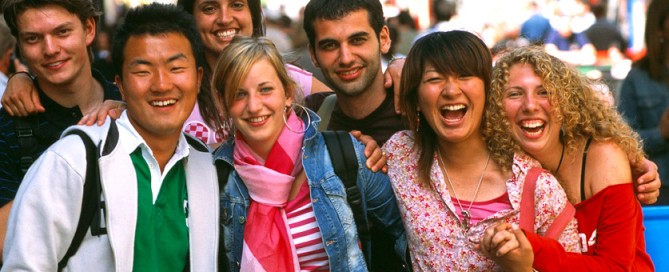Here are some references related to participation in clubs at school. Please consider adding references using the comments box below.
Bennett, M. (1998). Intercultural communication: A current perspective. In M. J. Bennett (Ed.), Basic concepts of intercultural communication (pp. 1-34). Yarmouth, MN: Intercultural Press.
Bohnert, A., Fredricks, J. and Randall. E. (2010) Capturing unique dimensions of youth organized activity involvement- Theoretical and methodological considerations Review of Educational. 80(4), 576-610.
Byram, M. (2006). Developing a concept of intercultural citizenship. In G. Alfred, M. Byram & M. Fleming (Eds.), Education for intercultural citizenship: Concepts and comparisons (pp. 109-129). Clevedon, UK: Multilingual Matters Ltd.
Byram, M., Esarte-Sarries, V., Taylor, S., & Allatt, P. (1991). Young people’s perception of other cultures. In D. Buttjes & M. Byram (Eds.), Mediating languages and cultures: Toward an intercultural theory of foreign language education (pp. 103-119). Clevedon, Avon: Multilingual Matters.
Byram, M., & Morgan, C. (1994). Teaching-and-learning language-and-culture. Avon, UK: Multilingual Matters Ltd.
Byram, M., & Risager, K. (1999). Language teachers, politics and cultures. Clevedon, England: Multilingual Matters.
Darling, N., Caldwell, L. L., & Smith, R. (2005). Participation in school-based extracurricular activities and adolescent adjustment. Journal of Leisure Research, 37, 51-76.
Fantini, A. E. (1999). Comparisons: Towards the development of intercultural competence.Chicago, IL: NTC.
Feldman, A. and Matjasko, J. (2005). The role of school-based extracurricular activities in adolescent development: a comprehensive review and future directions. Journal of Adolescence.30, 313-322.
Feldman, A. and Matjasko, J. (2007). Profiles and portfolios of adolescent school-based school-based extracurricular activity participation Review of Educational Research. 75(2) 159-210.
Bridget Fitzgerald Gersten (1998). Culture clubs. TESOL Journal. 7(5).
Kort-Butler, L. and Hagewen, K. (2012). School-based extracurricular activity involvement and adolescent self-esteem: A growth-curve analysis. Journal of Youth and Adolescence, 40(5) 568-581.
Knifsend, C. and Graham, S. (2012) Too much of a good thing? How breadth of extracurricular participation relates to school-related affect and academic outcomes during adolescence. Journal of Youth and Adolescence, 41(3), 379-389.
McNeil, R. (1998). High school extracurricular activities: Closed structures and stratifying patterns of participation. The Journal of Educational Research. 91(3), 183-191
Wenger, E. (1998). Communities of practice: Learning, meaning, and identity. New York: Cambridge University Press.
Taylor, L. K. (2004). Creating a Community of Difference: Understanding Gender and Race in a high school ESL Anti-discrimination Camp. In B. Norton & A. Pavlenko (Eds.), Gender and TESOL (pp. 95-110). TESOL Publications.


Connect with us
Facebook
Twitter
Blogger
Youtube